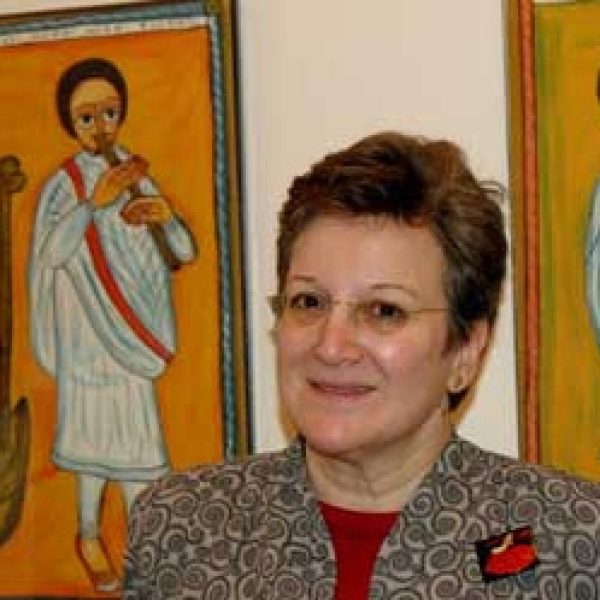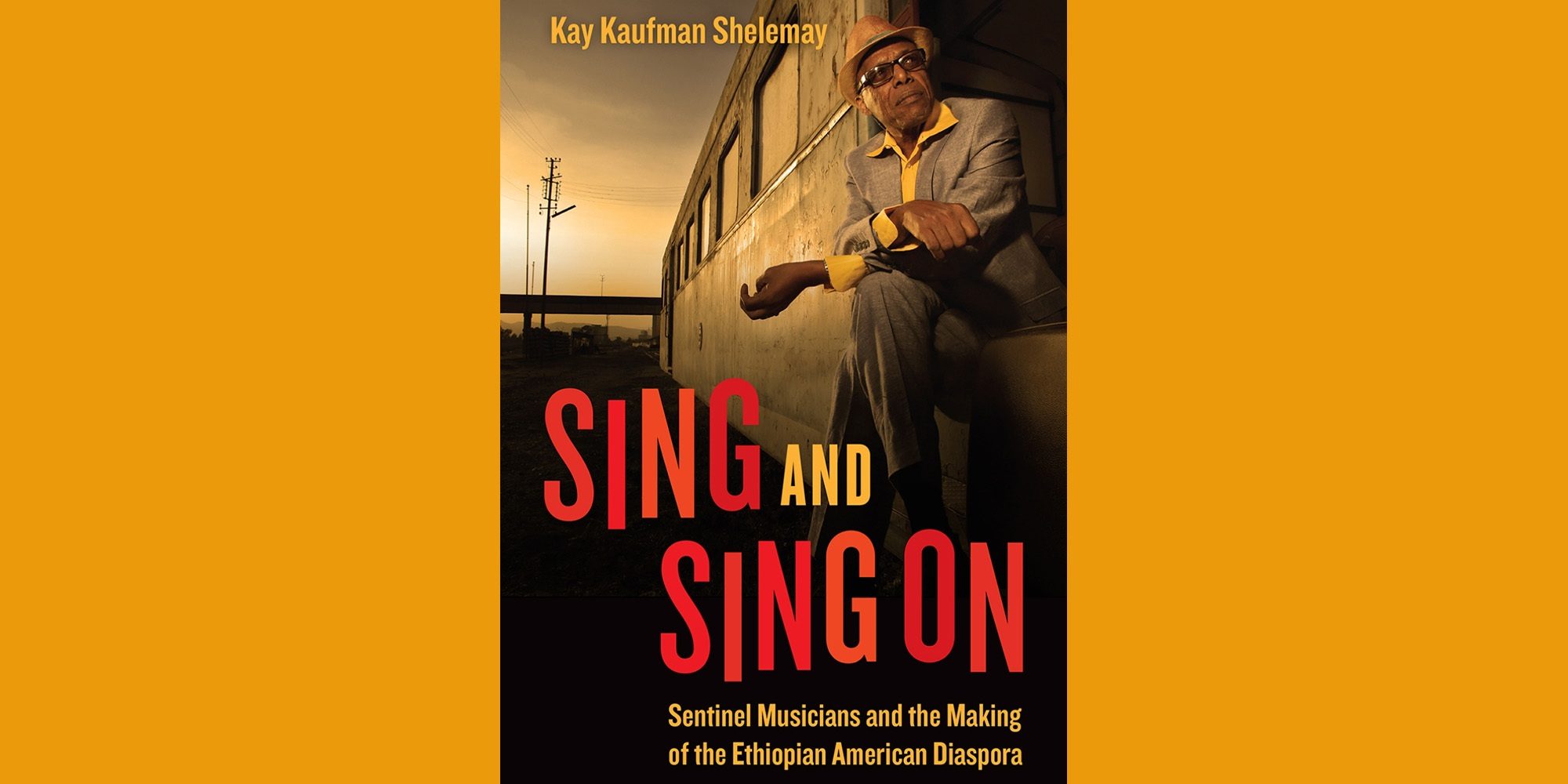Kay Kaufman Shelemay is a professor of music and African and African American Studies at Harvard. She is author of A Song of Longing: An Ethiopian Journey (University of Illinois Press, 1994). Her most recent book is Sing and Sing On: Sentinel Musicians and The Making of the Ethiopian American Diaspora (2022). Back in 2006, Banning Eyre met with her in her office at Harvard for a wide ranging discussion about Ethiopia and its music. This is Part 1 of that conversation, a companion to the Afropop Worldwide, Hip Deep program “Ethiopia: Empire and Revolution.”
Banning Eyre: Why don't you start by introducing yourself?
Kay Shelemay: I am Kay Kaufman Shelemay, and somehow, from a start in Houston Texas, I ended up as a scholar of Ethiopian music. I am an ethnomusicologist. Today, I teach at Harvard University, where I head an ethnomusicology program, and also I have an appointment in African and African American studies, as well as music, of course.
My personal discovery of Ethiopian music came when I was in college, at the University of Michigan, just starting graduate school, knowing that I wanted to study living traditions, and being very interested in the cross-cultural, but not being very sure which direction I was going. My first semester, I took an early music class. And I had a professor who wanted to be both ecumenical and cross-cultural. He put on a recording of Ethiopian chant, actually the music of the Beta Israel, now known as the Ethiopian Jews, once known as the Falasha, and I was fascinated by the people, by the music. And I fell in love with Ethiopia. So by late 1970, I knew I was, one, going into ethnomusicology, and two, going into the study of Ethiopian music. Ethiopian music has occupied me throughout my career, particularly heavily for the first decade and a half. And then during the period of time I was unable to return, during the Ethiopian revolution, I got into other things as well. So I have developed a number of other fields in the meantime. But I have now returned to studies of Ethiopian music because of the extraordinary musical and cultural energy of the Ethiopians all around me today, in Boston, New York, Washington, all over the new Ethiopian Diaspora.
B.E: Well, I’m glad we came to you at the right time. Let's talk about history. Can you give a kind of capsule history of Ethiopia leading up to the start of the 20th century?
K.S: Well, I think one has to think about Ethiopia in historical context because it is not one’s typical African country. It had only a very brief colonial experience. Most of the country had Italian occupiers only from 1935 to '41. Although there were Italians on the Red Sea coast, in what is today Eritrea, from the late 19th century, through 1941. But going back way before that, this was a historical empire. Ethiopia had monarchs. It had its own trade routes. It was a very sophisticated empire 2000 years ago. It was historically independent. It had contact across the Red Sea, and in 332, the Ethiopian court converted to Christianity, so one had a top-down conversion to Christianity in Ethiopia, very different from the way Christianity came to the rest of Africa, which was the result of missionaries 1200 years later.
So it is a very complex religious situation historically, and it is one, though, in which the Christian rulers, and especially over time, Ethiopians of Amharic descent, really were in positions of power, this until the Ethiopian revolution. Now, there are many other really fascinating aspects of Ethiopia. If anyone has traveled there, they have surely gone to see the famous rock churches at Lalibela, which were built between the 10th and 12th centuries in the Northern Highlands, and are carved of freestanding stone to replicate Jerusalem in Ethiopia, another Judaic connection.
There were continual movements of the center of power in Ethiopia from the north, further south. From the original, historical capital in Aksum in the north, you had a movement starting in the 17th century to Gondar, and then finally in the late 19th-century to the current capital, Addis Ababa, in the central highlands further south. So there were movements of political power. There were various ebbs and flows of power of the court. We do know a great deal about Ethiopian life, and about musical life, especially in the church, from Ethiopian historical sources. Again, this is an African country with written historical chronicles, with written lives of the Saints, with its own Christian liturgy, and its own liturgical language, Ge’ez. It has a very proud history and we know a great deal about it because we have both historical records, as well as oral testimonies. And, we have traditions that survive until today.
How does dynasty work? I think like most other royal families. One has political power passed down among lineages, usually within a particular ethnic and religious community, in this case over time, largely Christian and Amharic. But the claim to the heritage of Solomon was probably something that had its roots in oral traditions. Scholars who have written about it think that it was really consolidated in the 13th century as a justification for the assumption of a new dynasty to the throne, after a period of considerable instability. One finds throughout Ethiopian history this is not an unbroken stream of political power. Rather, it is a series of emperors and ebbs and flows of power. There are entire periods in which you have decentralized power in Ethiopia. The 19th-century was a good example of that, and earlier periods as well of the relative instability. And then people would amass power. They would reinstate the dynasty, and claim their connection to it.
B.E: That would include the coming of the brass bands, which Francis Falceto spoke about in our interview. But let's turn to the traditional side. What are azmaris?
K.S: Azmaris are a type of musical specialist. They are a group of musicians. Actually, they are individuals, but they are of an order of musicians who share repertories. They play Ethiopian instruments, such as the one-stringed, bowed lute, the masenqo. Some play the krar, the six-stringed lyre. And then there are also azmaris who sing. Many of the instrumentalists also sang, and then there are female azmaris who usually sing. This is evidently a very old part of Ethiopian society. They were at times traveling minstrels. Some were residents in the courts, and in various sub-courts and aristocratic households. They played everyday tunes. They played for entertainment. But they also had the ability to serve as carriers of the news. They could serve as political commentators, and they had repertories of songs that had historical content. For example, they would sing praise songs for various emperors and heroes of battles. Because of these repertories, and because they were carriers of these traditions of the past, and because they celebrated Ethiopian heroism, and Ethiopian history, they themselves became targets during periods of stress.
B.E: That’s fascinating. It sounds like they have a lot of similarities with griots in West Africa.
K.S: Absolutely. I think all of these traditions have continuities, and they also build in their own processes of change.
B.E: Let’s come back to our history and talk about the post-World War II period.
K.S: Well, I guess post-World War II, you have the return of the Emperor, the triumphant return of the Emperor. The Emperor, during much of the occupation, which was over by the early forties, was in England. He had very close ties with the west. So the period post World War II definitely opened up Ethiopia even more to Western influence. I don't know the exact dates of the beginning of Ethiopian radio, Ethiopian television. These are surely factors. Also, the military base, Kagnew Station in Asmara, which at that point was part of Ethiopia. All of these are important influences, but I think World War II, if you look at the musical situation internationally, you have in the fifties the birth of rock and roll. You have enormous musical ferment after World War II. You also have the emergence of the LP in this period, which caused international commerce and transfer in musical sound. I think, though, in the case of Ethiopia, more important than the recording industry in those early dates, were just the flowering of creativity and the beginning of flow back and forth with the west in musical terms.
I went to Addis Ababa first in 1973. And it was an international, very cosmopolitan center. This is already 25 years, 28 years after World War II, but there were embassies from all over the world. It was the headquarters of the Organization of African Unity. It was a real site of African discourse and of international discourse, and this was true in musical circles. You had a very large expatriate community in Addis Ababa, which dates from well before World War II, and this very much shaped and influenced musical life there, from the Armenian community, the Greek community. There was a Jewish community, a British community from early dates, and so on and so forth. French, and so on.
I think that, as we look back, we should not let our nostalgia for the past lead us to characterize a single moment as the epitome of a creative tradition. I think Ethiopian creativity was very active before that period, and it has persisted since. I think we are all very grateful to Francis Falceto for having done an extraordinary job of recapturing and documenting this era. It is enormously important, and I am myself enormously enthusiastic about his work. I just question pulling out one moment as the high point, when it strikes me that we are dealing with 2000 years of creativity, and ongoing creativity today. That was a golden moment, and there are other golden moments in Ethiopian musical history.
B.E: And as I understand it, the nightlife and recording industry were basically closed down.
K.S: It's actually quite straightforward. The revolution began, and in the very early days, by the summer of 1974, there began to be curfews, and for much of the early years, and continuing into the revolution, one really couldn't go out at night. I can remember 6 p.m. curfews. We would go somewhere for dinner, and people would pack paper plates and we would leave at six because all of a sudden, there would be an earlier curfew. And then it was just simply a 6 p.m. to 6 a.m. curfew. This had an impact on clubs, on restaurants, on social life. It had a big impact on the Ethiopian Church and liturgical performance, because many of the most musical rituals of the Ethiopian Church are performed in the wee hours of the night, so apart from the overthrow of the monarchy, and the Church losing its traditional seat of power, losing its land, for example, you also had the very real impact on musical performance in many quarters, because one simply couldn't go and hear it.
B.E: Do we have any of that revolutionary music ?
K.S: Actually, yes. And this is a wild story. One night, I was watching TV, and a revolutionary show came on. It was about Mother Ethiopia being sick and then being healed by the régime. And there was music by Orchestra Ethiopia. I saw that the show was coming on, and I ran and got a tape recorder and recorded it. And I did manage to get all of my recordings out of Ethiopia, along with some from the Radio Voice of the Gospel. At their request, I made some copies of things and took them out, because they feared very much for the fate of their large archives during the revolution. Anyway, I have since deposited these at Harvard in our archive of world music, and of course, over the years, I have had interest in them, and Halim El-Dabh, who was the founder of Orchestra Ethiopia, in doing his own archive, realized that I had this show. He got a copy, and to make a long story short, realized that it was the only existing recording of Orchestra Ethiopia's revolutionary music. Since I repatriated it to Mr. El-Dabh, he passed it on to the subsequent leader of Orchestra Ethiopia, Tesfaye Lemmap, who actually was involved with that performance, thought it was lost, and he has now documented it along with the help of Charles Sutton, who was a Peace Corps volunteer who himself is an enormously talented musician. He lived Ethiopia in the sixties, and played with the Orchestra. So we have now, not just the recording, but full documentation of that night during the revolution when an ethnomusicologist got lucky and turned on the tape recorder.
I left Ethiopia right at the end of 1975, was back through 1978 intermittently. But I moved to New York to begin my teaching career in 1977, and I remember my first days in Morningside Heights. I was teaching at Columbia, in the upper west side of Manhattan, being astonished. There were Ethiopians all around me. And four years earlier, I had gone to Ethiopia to do fieldwork on music that was really available on one or two records, but otherwise available nowhere outside of Ethiopia. Four years later, I sat in New York City with a large, thriving Ethiopian community all around me, with Ethiopian Churches beginning to be established—a complete new world of Ethiopia abroad. It was really quite astonishing.
B.E: But where did this whole philosophy of anti-intellectualism drive come from?
K.S: There were various models. In the earliest days, there were a lot of Chinese who came in. And you know, there was a whole movement that sent Ethiopian students out to the countryside. It was called zemecha. And it was sort of like what the Chinese had done during the Cultural Revolution, and I think it also was a very convenient way to get activist students out of the metropolitan area, especially out of Addis Ababa. But the Chinese were there at the beginning. There used to be broadcasts on television. We would hear Chinese opera on Ethiopian radio in the early year of the revolution. And then the Russians were there. There were Cubans there. So there were lots of models for revolutionary behavior, and this also had impact on music. Chinese opera on Ethiopian radio impressed me quite a bit. As I listened to it, I really had a case of cognitive dissonance. And then later, you have a lot of Eastern Europeans entering. There were new national anthems, and new patriotic hymns of a sort of Eastern European or Russian musical variety. I have no doubt that the Ethiopians felt an affinity with some of the Cubans who came, and likely that is one source of Cuban and Caribbean musical influence, surely in the revolutionary years. And so on and so forth. The world opened up in other ways. Some Ethiopians went and studied abroad in the sixties, even before the revolution, but afterwards in Russia and elsewhere in Eastern Europe.
B.E: Let’s come back to Ethiopian tradition, and talk particularly about lyrics and meaning. Tell us about the phenomenon of "Wax and Gold."
K.S: When we were talking about the azmaris, and their power, part of their power for political commentary, and part of their ability to offer cultural criticism, personal attacks, you name it, emerges from a quality of the Ethiopian language, Amharic, and also the liturgical language, Ge’ez, in which you have a system of double meanings. This is called Wax and Gold. And just to give you an example, this is taken from the classic book of the scholar Donald N. Levine, Wax and Gold, first published in 1965. He uses this metaphor from Ethiopian language and poetry as a larger entry into Ethiopian culture, but he has a very, very nice example. Let’s just take a little two line couplets:
“Since Adam your lip did eat of that tree,
the savior my heart has been hung up for thee."
So this is a couplet in which the wax, the outer meaning, is about Adam’s sin and the crucifixion, though it actually is a love message in its inner meaning. And the literal translation of the wax is, "Because Adam ate of the apple from the tree of knowledge, the savior of the world has been crucified for thee." But, to understand it completely you have to know that the verb meaning "was crucified," may also mean "is anxious to be near." So a literal translation of the gold, the real meaning of this couplet is, "Because of your tempting lips, my heart is anxious to be near thee."
B.E: It is such a pervasive idea, in song titles, CD titles.
K.S: Yes, it is ubiquitous. One finds the metaphor everywhere. And one does find double meanings used in Ethiopian everyday speech.
B.E: It sounds like a dangerous game.
K.S: It can be a dangerous game, definitely.
B.E: You mentioned the danger to azmaris during the Italian occupation. I wonder if there were some azmaris then who appeared to be praising the Italians, but were actually doing something else.
K.S: I don't know. I don't think there's much information about azmaris who collaborated, but secretly resisted. Most of what I have read or been told about the azmaris was what was feared was their rousing cry, shillela, there are songs calling for patriotism in battle, and their other songs commemorating important Ethiopian heroes. These songs were the ones that the Italians feared because they marshaled the populace to resist.
B.E: We certainly will, particularly in connection with the saxophonist Getatchew Mekurya who was inspired by shillela. But coming back to the Dergue, I am getting the idea from you that their impact on music was more a matter of manipulation and transformation. Before I had always simply thought of them as squelching all musical expression.
K.S: Well, there was squelching. There were committees that were set up who actually dictated what could be recorded, and even of what could leave the country. For example, when I left, I had to go to the censor and get everything approved. Actually, they only listened to one example, and I put a “Tizita” [a nostalgic song] on top, thinking that maybe they would stop there, and they did, because I had mainly church recordings and other such things, and I had recordings of revolutionary songs, and so on. So there were official dicta. Not only were the contacts of musical performance totally disrupted, life was disrupted. It is very difficult to concentrate on your music when there are bodies in the street, and everyone was at risk, so just the whole psychological environment was extremely difficult. But there also were official rules and regulations.
B.E: So Tizita is one of the five note scales?
K.S: Yes. And if you tune your krar, you tune it to those pitches. The masenqo only has one string, but you can play those notes. You have four basic tuning systems, four categories of melody or mode or tunings, and they differ from one another. And a couple of them are quite pungent to the western ear. They are beautiful, and they each have different associations. Ambasel has particular associations with flute music, music of the washint, the bamboo flutes, and pastoral settings. Tizita is longing, and so on. There is bati, tizita, ambasel, and anchihoy. And actually, there's a great demonstration of all four in the ABC film, Under African Skies. Mulatu Astatké organized it, and you have each played on the traditional instrument, and then you have them played on synthesizer by a modern group.
I have spent a number of years working closely with the chief musician of the Ethiopian Church, who is still very much active and involved in Church administration and performance. And I would also make the point that Ethiopia is the only African country with an indigenous system of musical writing, musical notation. And it is said to date from the earliest periods of Ethiopian Church history, from the life of St. Yared, who was the patron saint of music in the Ethiopian tradition. He is said to have composed the liturgy and the music and dance. I did a major study of Ethiopian manuscripts and worked with my teacher, Liqa Berhanu Makonnen, the head Church musician, on the notation system. We documented the entire tradition in a series of publications, volumes of Ethiopian chant. But what is clear is that this notation system emerged during a period of the national crisis. It immersed in the 16th century in the wake of an Islamic invasion of Ethiopia, of Highland Ethiopia. Muslim forces came from the South. They invaded the country. They destroyed many of the churches. This is why we don't have earlier Ethiopian manuscripts. We have a few surviving from the 13th and 14th centuries, 15th century. But most are from after the invasion. They burned monasteries and such, and they came close to destroying much of Ethiopia and the historical Christian tradition. It did survive. They pushed back the invaders, and they reconstituted the Ethiopian, Christian musical tradition, and invented a system of musical writing that would help preserve it.
Related Audio Programs
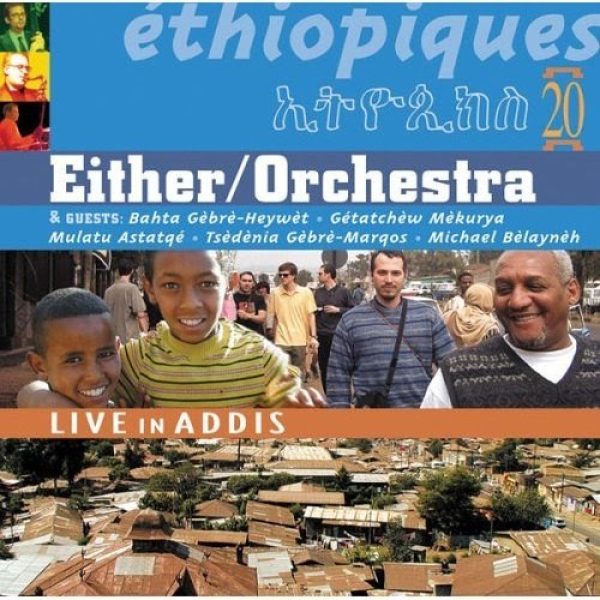
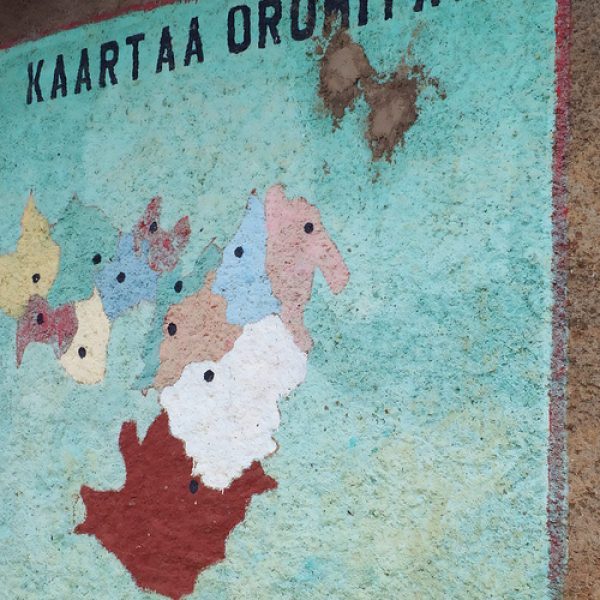
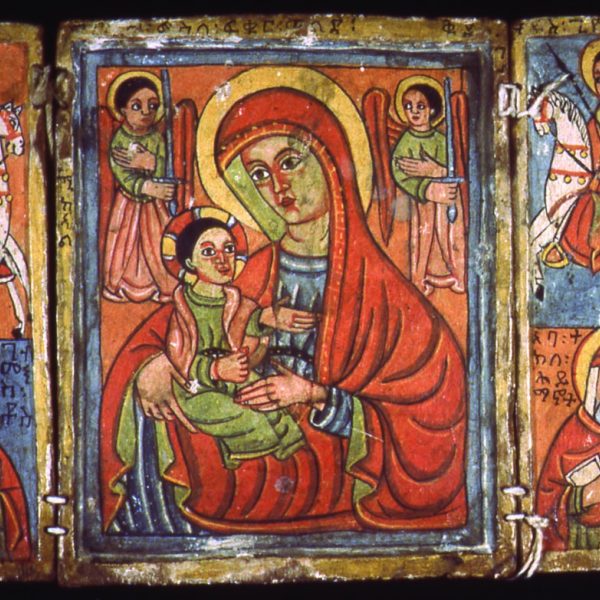
Related Articles
